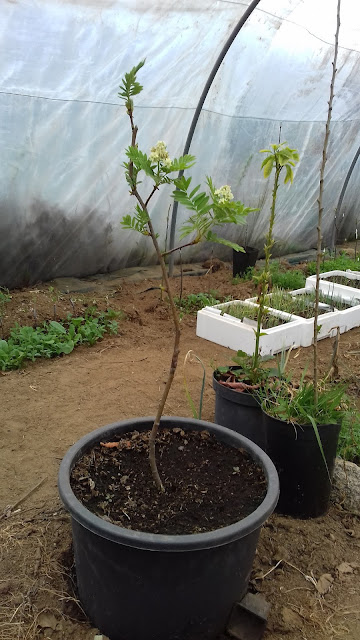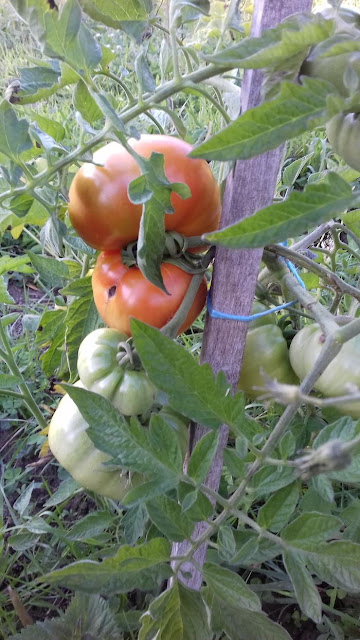
Asimina triloba. The paw paw tree from north america is one of the few fruit trees that can be grown in temperate climates and make exotic or tropical tasting fruit. I started growing this tree 2 years ago when i got a bunch of seedlings and seeds from a french guy in a plant exchange. I planted 15 seedlings in my fruit orchard and still have some seedlings in my tunnel. Last year they didn't grow that well for me. I ended up making shading structures with metal hoops and vlies to prevent sunburn. I don't know if this tree is able to grow here. It might be too cool in summer or not cold enough in winter or the soil might not be right. I will see this year how many (if any) of the 15 trees i planted will grow back. metal hoops and white p17 frost vlies to give the young seedlings shade. young seedlings in pots in my tunnel. Asimina triloba doesn't like being transplanted or having its roots disturbed so i used deep, tall pots.
















